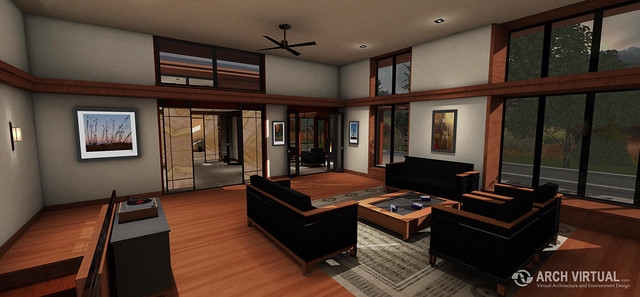
You can view the Unity3D web player version HERE.
You can download an Oculus Rift version HERE.
[UPDATE: We have now published an eBook about Architectural Visualization with Unity3D (including a chapter about Oculus Rift) that can be purchased HERE.]
During the past several weeks, we’ve been having a blast discussing and demonstrating the use of Oculus Rift and Unity3D in architectural visualization. The experience of walking into a design concept in virtual reality in a Rift can’t be described with words. Everyone who experiences it for the first time is totally blown away, and there’s never any doubt that this technology has far-reaching potential for visualizing buildings and cities.
If you have an architectural project you’d like to experience it in real-time 3D, let us know a little bit about your project and we’ll send you an estimate. Contact us HERE.

If you’re not familiar with this technology, we’re basically using the same software used to make cutting-edge video games (Unity3D), but we’re using it to create real-time virtual walk-throughs. The term ‘real-time’ means the ability to move around the design using your arrow keys, with the 3D view on your screen updating immediately on-the-fly, similar to the experience of playing a video game. Instead of visualizing the design through a single, static illustration or floor plans, we create a dynamic and interactive experience that allows you to explore the building inside and out.
Architecture firms with the capability to work with software packages like Autodesk Maya or 3DS and Unity3D are able to generate virtual applications in-house. In some cases, geometry exported from CAD or BIM packages like Revit or ArchiCAD can be used to create the real-time model. However, the models they output are often very complex or otherwise incomplete, and almost always needs some level of customization and touch-up in 3DS or Maya.

In most cases, the visualization process is outsourced to a specialty service, which is where we come in. Arch Virtual translates architectural drawings, hand-drawn sketches or CAD, SketchUp or BIM into real-time virtual applications. We build on whatever information is provided to us to create a real-time-ready 3D model. We then bring it into Unity3D, where we set up realistic lighting, textures and material shaders – and fold in some performance enhancing features like occlusion culling and lightmapping, asset bundling and more. In the end, we provide our clients with a downloadable application of the virtual experience, or with a code and files enabling them to embed the virtual tour directly on their own website.
The virtual model can be viewed on a TV or projected onto a big screen during design presentations or sales pitches, and can optionally include voice-clips or pop-up menus that explain more about the project’s features and highlights. We can develop just about any functionality you can imagine – from building in the ability for visitors to change material types and paint colors to multi-player functionality that enables you to meet with others, discussing the design in typed chat or voice communication.
One huge advantage of developing the real-time application is that it can then be used to generate an almost infinite range of illustrations by capturing the screen view (examples are shown in this post). We can also use the virtual model to create a pre-recorded animation of the virtual model that can be uploaded to YouTube.
Compared with the cost of rendering traditional architectural illustrations and animation, the real-time application is a very affordable option. To read more about the estimated costs for developing these applications, check out this post.
We can also provide an Oculus Rift compatible version of your project. The Rift ( http://www.oculusvr.com/) is basically a virtual reality headset designed for immersive gaming. It is worn over your eyes like ski goggles, and the display is steroscopic, such that you feel like you’re looking out into space. It also tracks your head movement in-realtime, enabling you to look around through a view that envelopes nearly your entire field of view. The sense of actually being inside of the building is absolutely incredible. The ability to perceive scale and understand the overall feeling and form of the design has to be seen to be believed.
To learn more about how we can transform your architectural project into a real-time, interactive experience, send us a note at info@archvirtual.com

